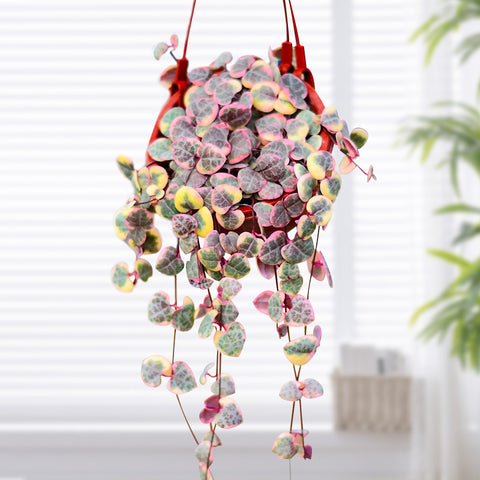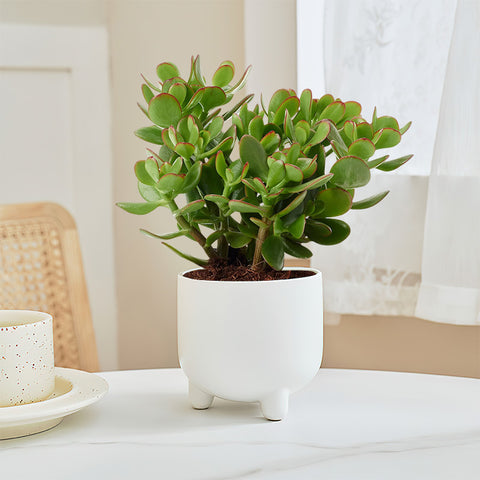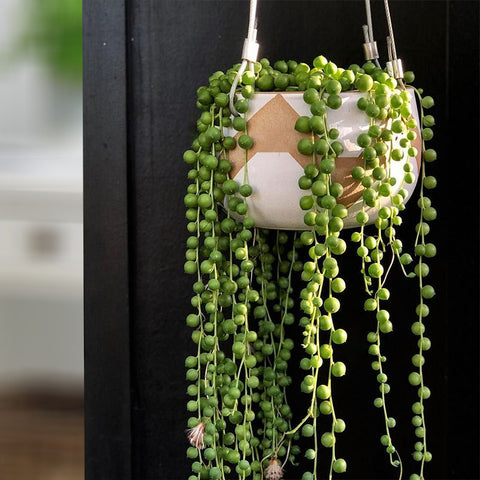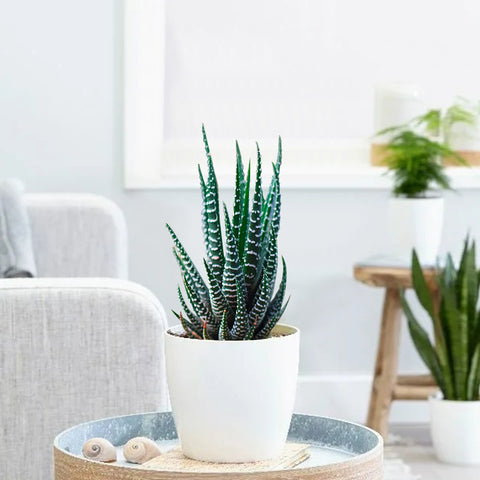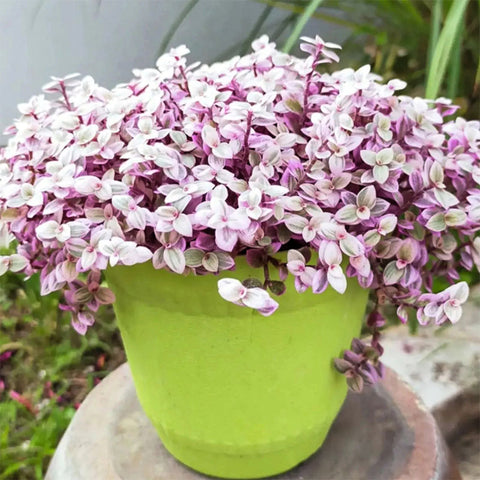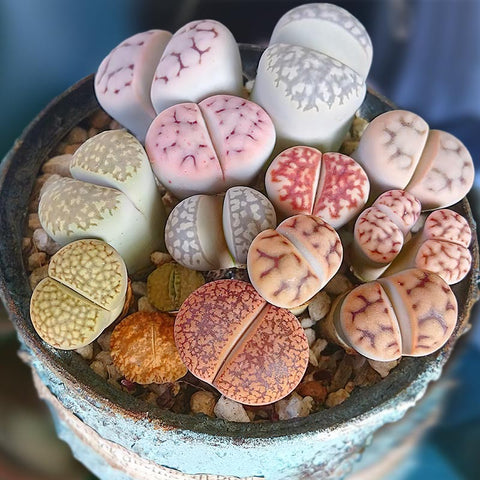Succulents, low-maintenance plants with thick fleshy leaves adapted to water storage. With hundreds of different varieties, succulent plants come in all shapes and colors.
If you're new to indoor gardening and want to bring some green magic into your home, succulents will make you a proud plant parent in no time! These plants are like the accessible mode of houseplants. They don't demand a lot and still look beautiful.
You know what some plants are like, "Give me water daily or I'll be sad". Well, succulents are more like, "Hey, water me when you can, and I'll be just fine!" They're like the low-maintenance buddies of the plant worlds.
Let's dive into the top 15 succulents you can grow as houseplants:
1. String of Heart
String of heart (Ceropegia woodii), a graceful hanging succulent. Its trailing vines, adorned with charming heart-shaped leaves. One of the features of the String of Hearts is its ability to thrive even in spots with indirect light. Picture this: a cascade of heart-shaped leaves hanging by your window or adorning a shelf. They sway ever so softly with a gentle breeze, creating a healing and calming sight.
Care tips:
1. The String of Hearts doesn't require frequent watering; its wrinkled leaves are a watering indicator.
2. There are many enjoyable methods of propagating the String of Hearts plant, click here to learn how to propagate String of heart succulent.
2.Panda Plant
Just like its name suggests, the panda plant (Kalanchoe tomentosa) looks like it could be part of a panda's black and white. Its leaves are covered in a soft, velvety fuzz that gives them a cozy, unique texture.
It's like having a small panda friend right on your windowsill, soaking up the sun and adding a touch of nature to your living area. The panda plant's compact size makes it perfect for small spaces or even as a desk companion.
Care tips:
1. The panda plant is more drought-resistant than other succulent plants, and its droopy leaves resemble rabbit ears when it lacks water.
2. Keep this plant away from your pets, as ingestion could lead to poisoning.
3. Aloe Vera

Aloe Vera is a pretty common indoor plant, but did you know it's also a type of succulent? Aloe Vera is like a first-aid kit right at home, known for its soothing and healing properties. Aloe Vera is a remarkably adaptable plant, making it an easy choice for indoor spaces. It's content with moderate light conditions, which means it can be placed on your windowsill, desk, or even a shelf a bit farther from direct sunlight.
Care tips:
1. Pay attention to the watering frequency. Let it dry completely before watering thoroughly. Giving your Aloe Vera a bit of thirst is a good idea.
2. Placing Aloe Vera in bright, indirect light can help it grow faster.
4. Jade Plant
Jade Plant (Crassula Ovata), the succulent also be called "Money Plant" or "Lucky Plant". This succulent is believed to bring good fortune and positive energy, making it a choice for homes and offices. It doesn't require much care, making it a fantastic choice for beginners or those with busy schedules.
Care tips:
1. Regular pruning keeps the jade plant's shape and encourages thicker stems.
2. Jade plant can also thrive outdoors in ample sunlight; be patient as it adapts gradually.
5. Mother of Thousand
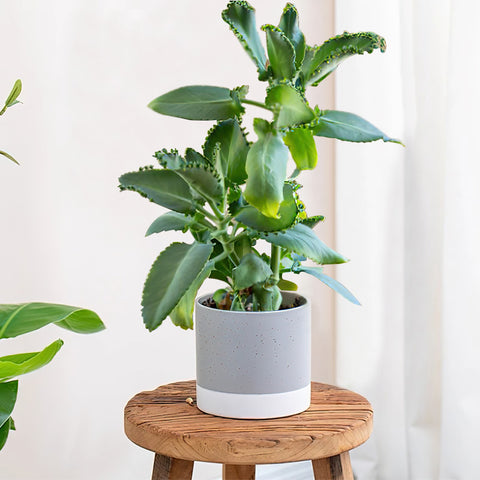
Mother of Thousands (Kalanchoe daigremontiana), the magic plant can make "thousands" of new baby plants by itself! It's also known as one of the hardest houseplants to kill. Remember to keep it away from your other plants; if left unchecked, it can expand its territory endlessly, potentially posing a threat to your other houseplants.
Care tips:
1. Mother of Thousands loves bright, indirect sunlight. So, putting it near a window where the sunlight isn't too strong is just right.
2. Water only when the soil is arid.
Both the Mother of Thousands and the Mother of Millions share a similar propagation feature. Click here to learn the difference between Mother of Thousands and the Mother of Millions.
6. String of Pearls
String of Pearls (Senecio Rowleyanus) deserves a prime spot in our list of top 10 indoor plants, the succulent has become quite the familiar face in indoor gardening. A string of round pearls, elegantly draped from hanging pots or baskets, pairs seamlessly with modern or bohemian-style interiors.
Care tips:
1. A string of Pearls is a low-light houseplant, it can thrive in low-light conditions.
2. This low-maintenance succulent quickly recovers even after being watered during extreme drought.
Click here to learn how to care for String of Pearls.
7. Burro's tail
Burro's Tail (Sedum morganianum), this unique succulent is often called the "Donkey Tail" due to its trailing stems adorned with plump, fleshy leaves. Click here to learn the difference between Burro's Tail and Sedum Burrito.
Care tips:
1. Its preference for light falls somewhere between typical houseplants and other succulents.
2. Keep Burro's tail away from kids to prevent it from becoming a bare stem, the arranged leaves of the Burro's Tail plant hold a particular fascination for curious kids.
8. Snake Plant
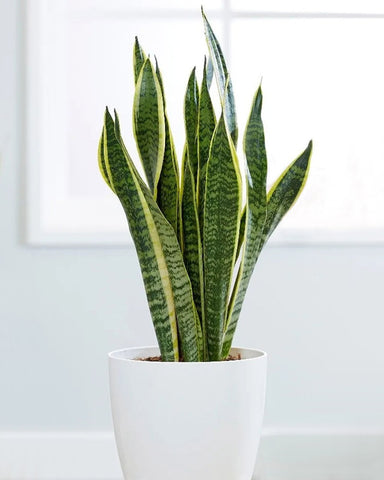
Among the myriad choices for houseplants, few exhibit the blend of elegance and endurance that the Snake Plant does. This remarkable succulent, is known scientifically as Sansevieria trifasciata. The Snake Plant's distinctive vertical growth is adorned with intricately patterned leaves, showcasing a unique blend of aesthetics and structural strength. Its ability to purify the air is a bonus.
Care tips:
1. The snake plant is the best houseplant, it thrives in low light and demands minimal attention.
2. Ensure your plant pot has drainage holes, and then follow the "soak and dry" method to water your Snake plant.
9. Christmas Cactus

Few evoke the seasonal spirit with the finesse of the Christmas Cactus, the succulent's vibrant blooms precisely when the air is filled with holiday cheer.
Care tips:
1. 8-10 hours of daily sunlight encourage Christmas cacti to bloom, making a well-lit windowsill a great choice.
2. It's recommended to water the base of the Christmas cactus; when the leaves turn soft, allow it to absorb water from a container.
10. Zebra Haworthia
Zebra Haworthia, a low light houseplant, the vertical white stripes on its dark green leaves resemble the patterns of a zebra. It's perfect for smaller spaces or for adding a touch of greenery to your desk or tabletop.
Care tips:
1. Zebra Haworthia thrives in bright, indirect light and can tolerate a bit of neglect when it comes to moisture.
2. Caring for the Zebra Haworthia is a breeze, making it an popular choice for plant enthusiasts and beginners.
11. Ponytail Palm
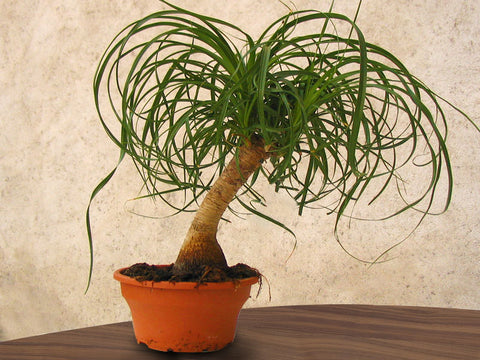
Ponytail Palm (Beaucarnea recurvata) is actually a succulent belonging to Agave family. The Ponytail Palm is characterized by its long, slender leaves that arch and cascade from a central point, giving it the appearance of a ponytail. The stem, or caudex, is usually thick and bulbous, resembling an elephant's foot. It adds an interesting sculptural element to the plant's overall appearance.
Care tips:
1. When planting a Ponytail Palm, it's generally recommended to keep about a third of the caudex above the soil level.
2. The Ponytail Palm stores water in its swollen base, it's better to underwater than overwater.
12. African Milk Tree

The African Milk Tree has an upright, branching growth habit and features segmented stems with spines along the edges. The stems are typically green, but they can develop a reddish hue under certain conditions. Like many succulents and cacti, the African Milk Tree stores water in its stems, allowing it to tolerate periods of drought.
Care tips:
1. African Milk Trees thrive in warm temperatures.
2. African Milk Tree contains a milky sap that can be toxic and irritating, so handle it with care and keep it away from pets and children.
13. Callisia repens 'Pink Lady'
Callisia repens 'Pink Lady', commonly known as Pink Lady or Pink Bubbles, is a popular trailing houseplant. It’s pink, green, and cream color add a touch of liveliness to your indoor spaces. Utilize the trailing nature of ‘Pink Lady’ by placing it in hanging baskets, creating a visually pleasing and dynamic display.
Care tips:
1. Pink Lady prefers higher humidity levels, but it can adapt to average indoor humidity.
2. Prune leggy stems to encourage bushier growth. You can also propagate from the cuttings you prune.
14. Rickrack Cactus

The Rickrack Cactus gets its name from the unique zigzag or fishbone pattern of its stems, also known as the Fishbone Cactus, is a distinctive and eye-catching cactus species that is often sought after as a houseplant. The flowers of the Rickrack Cactus are usually white and fragrant, blooming at night.
Care tips:
1. It grows rapidly under bright, indirect light.
2. Use well-draining cactus or succulent mix. Add perlite for better drainage.
15. Lithops
Lithops, commonly known as "Living Stones," are fascinating and unique succulent plants that are often grown as houseplants. The upper surface of the leaves can have various colors and patterns, mimicking the surrounding rocky terrain.
Care tips:
1. Water sparingly, Lithops have a distinctive growth pattern that involves splitting and absorbing moisture from the air.
2. Plant Lithops in shallow pots that mimic their natural growing conditions.
Conclusion
Succulent plants remind us that even within the confines of urban living, the wonders of nature can thrive. As you curate your indoor haven, remember that these succulents are more than houseplants – they breathe life into every corner of your abode.


